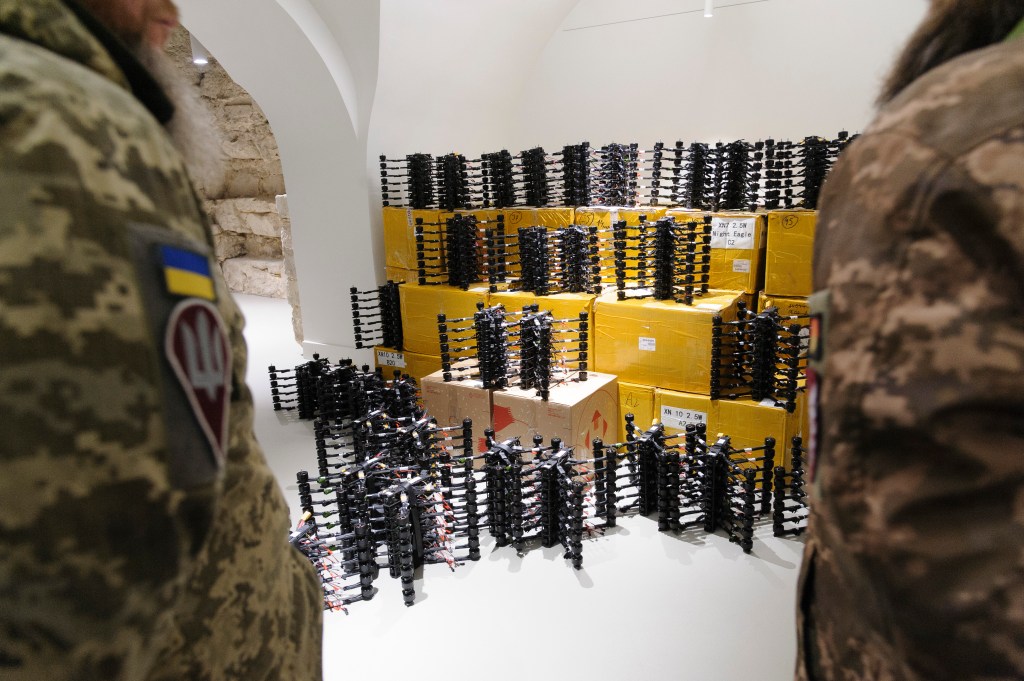- The U.S. partnered with Ukrainian drone manufacturers to enhance military capabilities, using war-tested technology proven in combat. This collaboration aims to improve drone autonomy, sensor technology and affordability.
- Ukrainian firms mass-produce drones capable of withstanding electronic warfare, operating in contested airspace and carrying explosive payloads hundreds of miles.
- The Pentagon’s focus on Ukrainian drones signals a shift in military strategy, prioritizing practical, battlefield-ready systems over high-cost, high-tech platforms.
Full Story
The U.S. is turning to Ukrainian drone manufacturers to enhance its military capabilities, leveraging war-tested technology. American defense startups, struggling to develop small, reliable drones, are teaming up with Ukrainian firms that mass-produce drones capable of withstanding electronic warfare and operating in contested airspace.
What role do US companies play in these partnerships?
Companies such as Southern California-based CX2 have integrated their software and sensors into Ukrainian drones, with Defense Department approval. Other startups, including Swan and KEF Robotics, are working with Ukrainian firms to improve drone autonomy and sensor technology.
The Pentagon’s Defense Innovation Unit has also awarded contracts to Ukrainian-American partnerships to test long-range attack drones, with the potential for full-scale production.
How does Ukraine’s drone production compare to the US?
Ukraine has rapidly expanded its drone industry since Russia’s 2022 invasion, producing over 2 million drones in 2024 alone. This production far surpasses the estimated U.S. military capacity of 100,000 per year. Many of these drones can fly hundreds of miles with explosive payloads and have been used in strikes inside Russia.

What are the challenges for Ukrainian drone makers?
Ukraine’s drone manufacturers face export restrictions that limit sales outside the country, but many are pushing to lift these controls. Some companies, such as Skyfall, are seeking special permission to sell directly to the U.S.
Meanwhile, Ukrainian firms must also navigate challenges in sourcing components, as many rely on parts from China, which could create obstacles for U.S. military procurement.
What does this mean for the future of US military drones?
The Pentagon’s focus on Ukrainian drones signals a shift in military strategy.
While American defense firms have traditionally prioritized high-cost, high-tech platforms, Ukraine’s ability to mass-produce affordable, effective drones is influencing a move toward more practical, battlefield-ready systems.
Legacy companies like Lockheed Martin and startups like Anduril are now developing lower-cost munitions, and partnerships with Ukraine could accelerate these efforts.
How does this fit into broader US defense strategy?
Beyond Ukraine, the U.S. is also adapting its military tactics based on lessons from the war. Troops stationed in Eastern Europe are integrating new technologies, including drones, to modernize battlefield operations.
The Army’s “Transformation in Contact” strategy emphasizes rapid innovation, decentralized command structures, and improved electronic warfare capabilities — all areas where Ukraine’s drone warfare experience is shaping U.S. military thinking.
By adopting Ukraine’s drone expertise, the U.S. aims to enhance its technological edge, particularly as it prepares for potential conflicts in the Pacific.
The partnerships between U.S. and Ukrainian drone manufacturers could define the future of military drone warfare, ensuring that American forces are better equipped for modern combat.